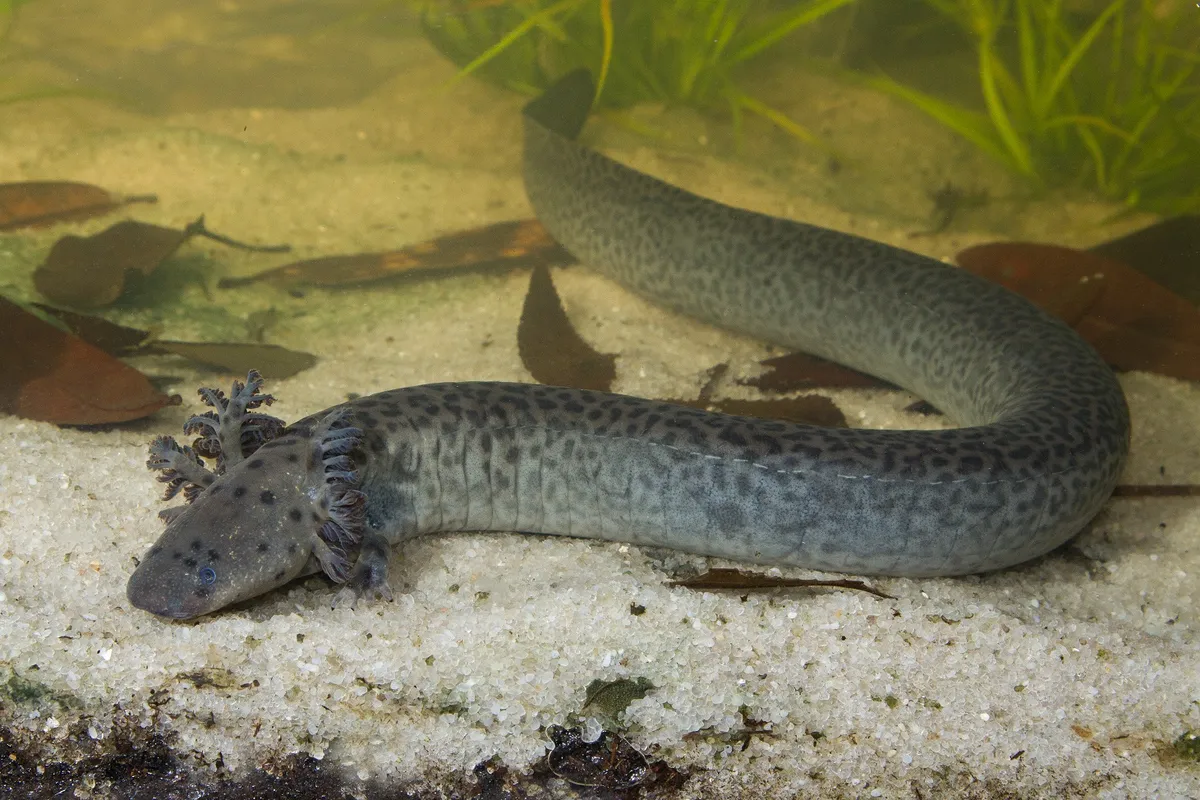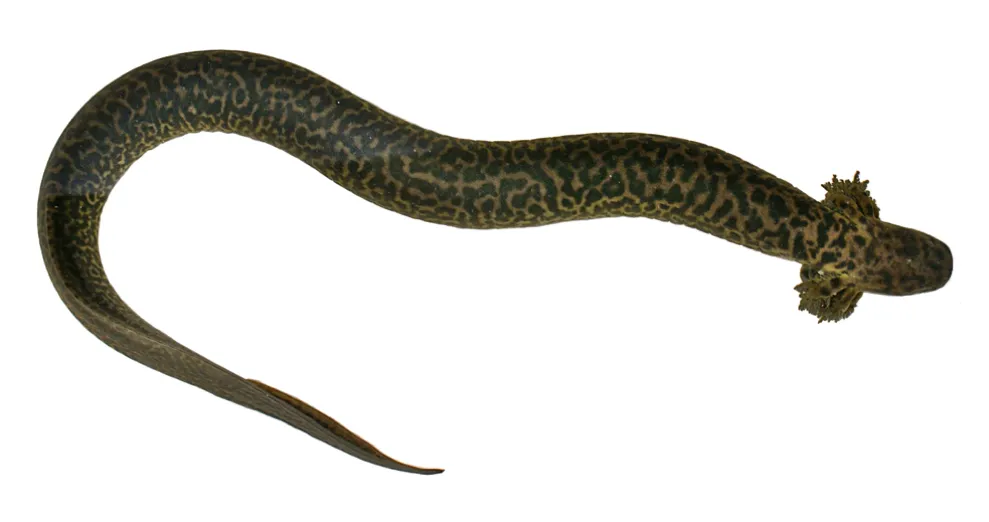Rumours have been told about a giant salamander living in swamps and streams in northwestern Florida and southeastern Alabama for decades, and now scientists have scientifically described it.
Informally called the leopard eel, the salamander has been named as the reticulated siren Siren reticulata, and is one of the largest US species to be described in over 100 years.
“The whole thing was kind of a campfire story,” said Dr Sean Graham, lead author of the study, to the New York Times.
“I was hearing rumours about it from [biologists], and then years would go by and I would never see a description of the species.”

The reticulated siren belongs to the Sirenidae family, which was known for two species – the lesser siren Siren intermedia, and the greater siren Siren lacertina. The latter is the largest of the two and can reach up to 97cm in length.
Graham and Dr David Steen have been attempting to track down and describe the species since meeting at Auburn University in 2008, where there was a mislabelled reticulated siren specimen (it was labelled as the greater siren).
In order to successfully describe the species, they needed fresh DNA – a difficult task with a species so mysterious and rarely seen, particularly since both scientists were working on this project in their spare time.
However, Steen managed to catch a live reticulated siren in 2009, and they caught another three in 2014.
From these four specimens, and three museum specimens, Graham and Steen worked with a number of other researchers to analyse the DNA and confirm that it was a species new to science.
“What immediately jumps out about the reticulated siren that makes it so different from currently recognised species is its dark and reticulated [or net-like] pattern,” Steen told National Geographic.
“It also seems as though they have a disproportionally smaller head, as compared to other sirens.”

The newly described species hasn’t yet been assessed by the IUCN Red List or another conservation body, but with its limited geographic distribution and its habitats facing a number of threats, the scientists believe it would be vulnerable to decline.
Further work on the reticulated siren and the Sirenidae may reveal fascinating behaviours, and possibly even more species.
